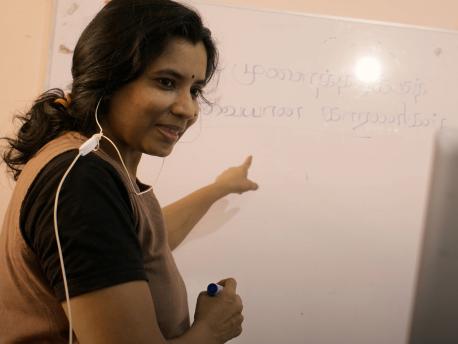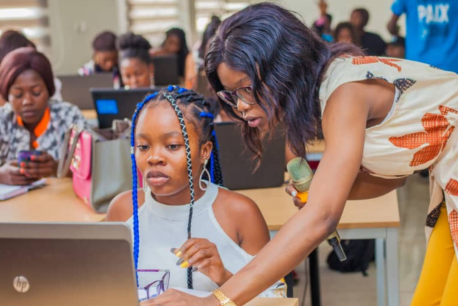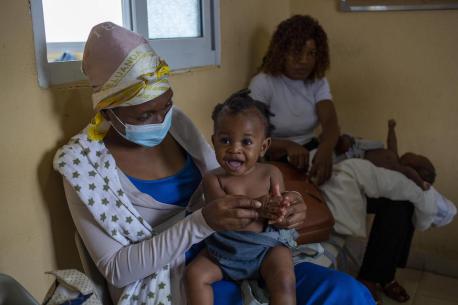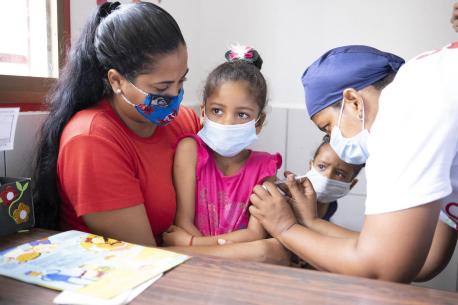
Innovating to Keep Kids Learning During the Pandemic in Sri Lanka
Around the world, even the most basic smartphones have been a saving grace for kids during the COVID-19 pandemic school closures as millions of students used them to continue their studies and stay in touch. But in Sri Lanka, inequitable access to mobile phones, other digital devices and internet caused major learning disruptions for vulnerable students.
At Navatkadu Namahal Junior School in Batticaloa, a city in eastern Sri Lanka, digital access and literacy is low compared to that of the western part of the country. Parents and other caregivers, many of them day laborers, have suffered severe COVID-19 economic losses and often can't afford cell phone service or internet.
That's why teachers like Sivajini Jeyaraj have had to get creative during school closures. Since only four of her students have cell phones, she couldn't rely solely on the Ministry of Education's national e-learning portal, Ethaksalava. Instead, she tailored her teaching to the technology most of her kids do have: TV. Some 73% of Sri Lankan households have televisions, which students have used to access the emergency remote educational content State-run channels have been broadcasting. Jeyaraj supplements these lessons with in-person classes and volunteer-led study groups.
Watch the video to see how a dedicated teacher draws upon national and local resources to keep her students learning
On a typical morning, Jeyaraj goes to student’s homes to hand out learning materials that Sri Lanka's Ministry of Education has created for children in all grades. Then, she conducts in-person classes in a garden for pupils who have no access to digital devices. In the afternoons she teaches online, reaching students who do. With the additional help of dedicated volunteers who ferry homework back and forth between herself and her students, the resourceful Jeyaraj is working hard to make sure none of her students gets left behind.
"I’m giving the best education, morals and values to my own child,” says Jeyaraj. “I’m trying to give the same quality education to each of my students.”
During the pandemic dedicated teachers like Jeyaraj have gone to great lengths to safeguard children’s education and their futures. UNICEF is working around the world to support students and teachers to keep children learning and help schools reopen safely. You can help.
Top photo: Sivajini Jeyaraj adapted her teaching methods to reach children whose only access to their curriculum was through their TV: "It’s much easier to engage my students in this way and support them in their learning process." Video edited by Tong Su for UNICEF USA.
HOW TO HELP
There are many ways to make a difference
War, famine, poverty, natural disasters — threats to the world's children keep coming. But UNICEF won't stop working to keep children healthy and safe.
UNICEF works in over 190 countries and territories — more places than any other children's organization. UNICEF has the world's largest humanitarian warehouse and, when disaster strikes, can get supplies almost anywhere within 72 hours. Constantly innovating, always advocating for a better world for children, UNICEF works to ensure that every child can grow up healthy, educated, protected and respected.
Would you like to help give all children the opportunity to reach their full potential? There are many ways to get involved.





